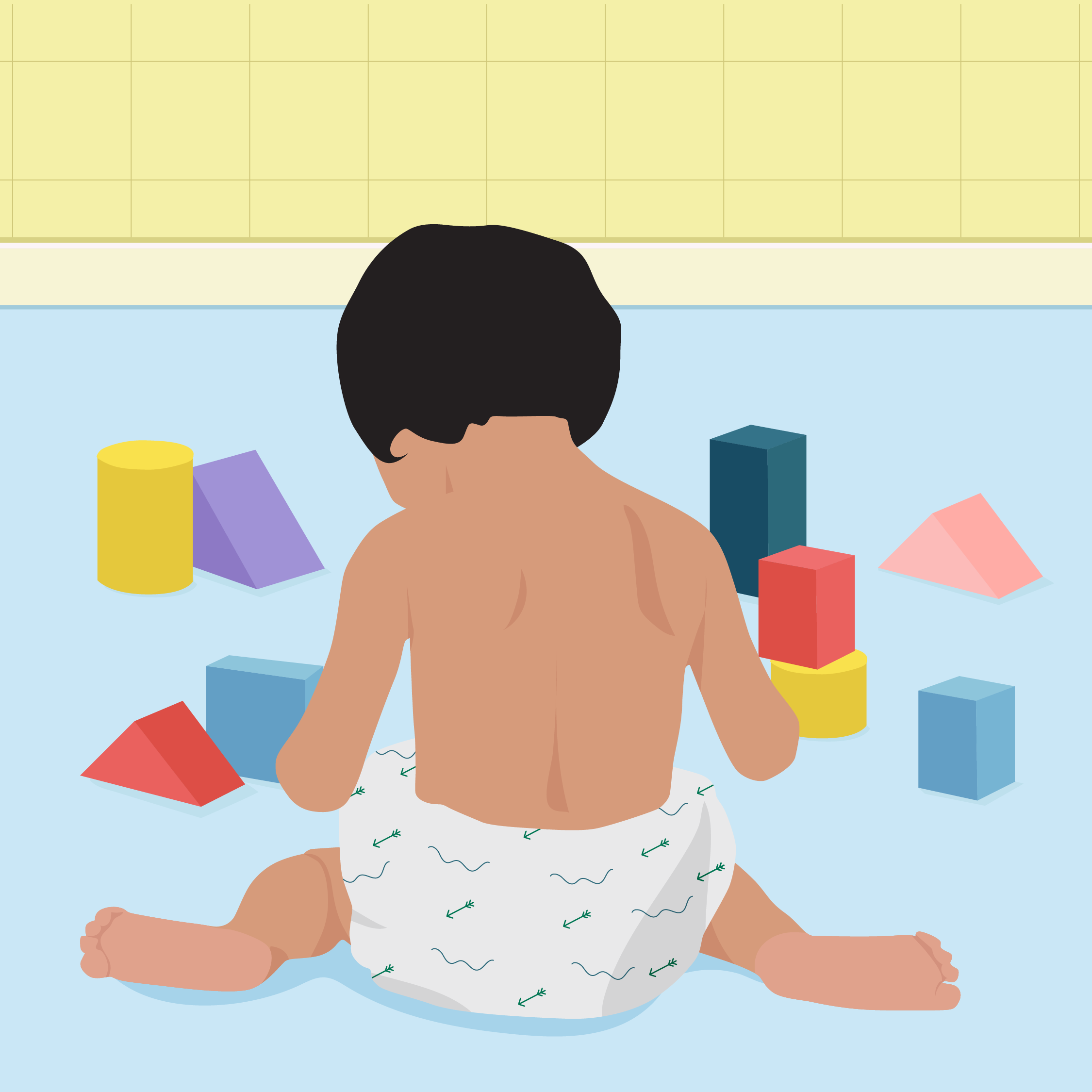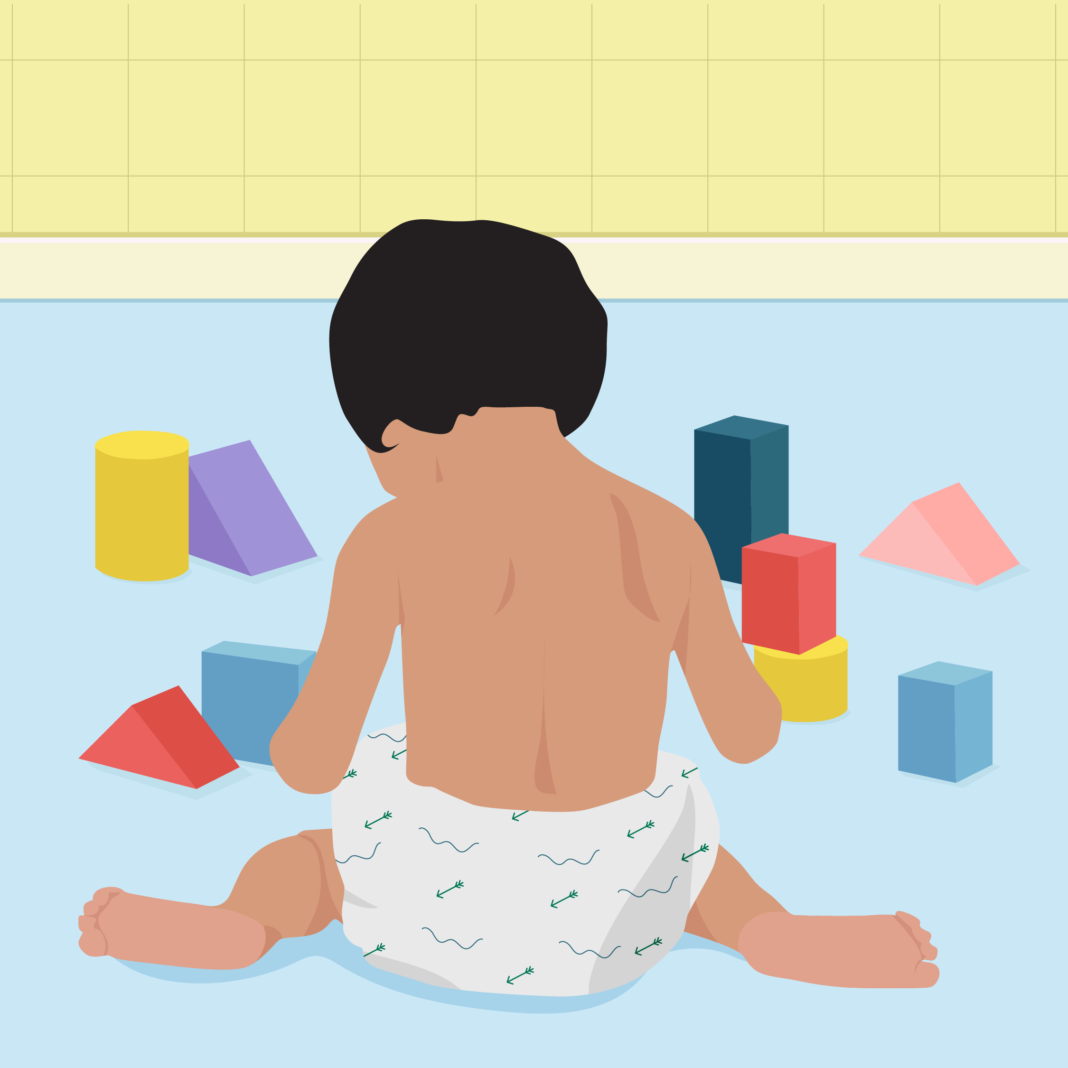Recently, a story about the dangers of kids sitting in the 'W' position went viral, catching the attention of parents everywhere.
The gist: While sitting in this position under the age of two is likely safe, according to some reports, if this position becomes a go-to after age two, it can negatively impact a child's overall development, so it's best to encourage kids to change their on-the-ground positioning.
But not *everyone* is in agreement about that—and many experts say that the idea that sitting in the 'W' position can cause postural, orthopedic, or muscular problems down the line is little more than a dated myth. Here, a little bit behind the 'W' position itself, whether or not it's truly harmful, and what to do if you find your child seated this way.
What the \’W\’ Position Is
The 'W' sitting position might remind you of hero pose in yoga. More or less, it's a position where a child's bum is on the ground and their legs and knees are in front of them splayed out to the sides.
It's most commonly seen in toddlers, though some kids sit in this position until eight or nine. But why do children sit like this? Part of the reason may be anatomical. It's common for children to be born with their femurs (or thigh bones) turned in, a condition called femoral anteversion.
"The reality is that most of us have femoral anteversion — it's excessive femoral anteversion that allows kids to sit in the 'W' position," says Greg Hahn, M.D., a pediatric orthopaedist at Johns Hopkins All Children's Hospital.

Why Docs Once Thought Kids Sitting in the \’W\’ Position Was Dangerous
Old-school thinking among orthopedists in the 1960s and 1970s said that intoeing, or having your toes point inward when you walk, was a muscular or soft tissue issue — and that it was possible to train kids not to do it, explains Dr. Hahn. By having kids avoid positions like the 'W' sitting position, the thinking was that you'd avoid stretching out the muscles, which was what was allowing them to continue to intoe.
But research, notably by pediatric orthopedist Lynn Staheli, M.D., then found that intoeing was simply a normal variation (much like being tall or left-handed) — and something that self-resolves without any treatment (read: a changing of position or braces).
Plus, if you watch people walk, you'll notice most don't do so in a perfect, straight ahead line — most people toe in or out a bit and in children, it's just more pronounced, says Dr. Hahn.
The True Effects of the \’W\’ Position
In short, while the myth that you have to avoid the 'W' position might live on, Dr. Hahn says "the position doesn't cause any long-term problems so we don't worry about it."
Dr. Hahn also notes that he's unaware of any study linking the position to osteoarthritis issues.
Furthermore, "research by the International Hip Dysplasia Institute and others has shown that increased Femoral anteversion does not cause hip dislocations and does not harm the hip socket," says Charles T "Chad" Price, M.D., a pediatric orthopedist and medical director of the International Hip Dysplasia Institute.
He adds that if children do have femoral anteversion, 'W' sitting can be more comfortable and should be allowed. "Spontaneous correction occurs with growth in almost all cases." While intoeing is very common in young children, it's rarely seen in adults regardless of sitting habits, he says.
Your takeaway: No need to tell your child to change positions if you see them sitting in the 'W' position.
"It's no different than having a kid sit 'criss-cross applesauce'. It's not a problem. It's not bad posture where you have to encourage a kid not to sit that way,'" says Dr. Hahn.


